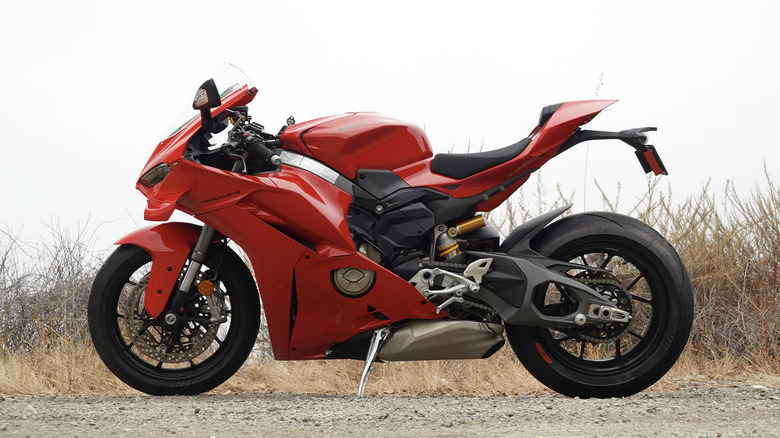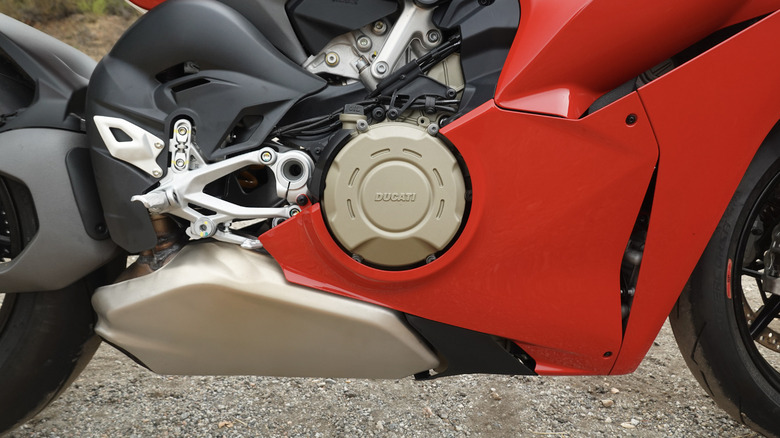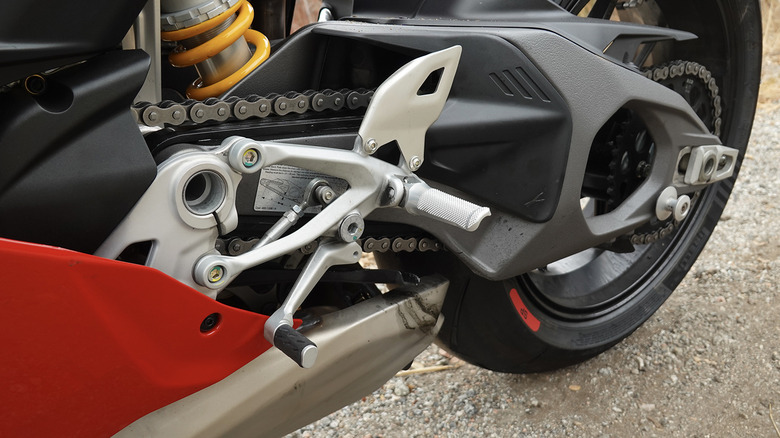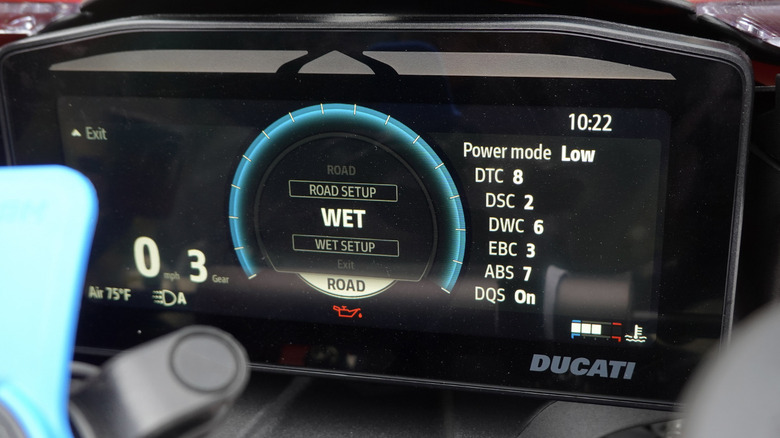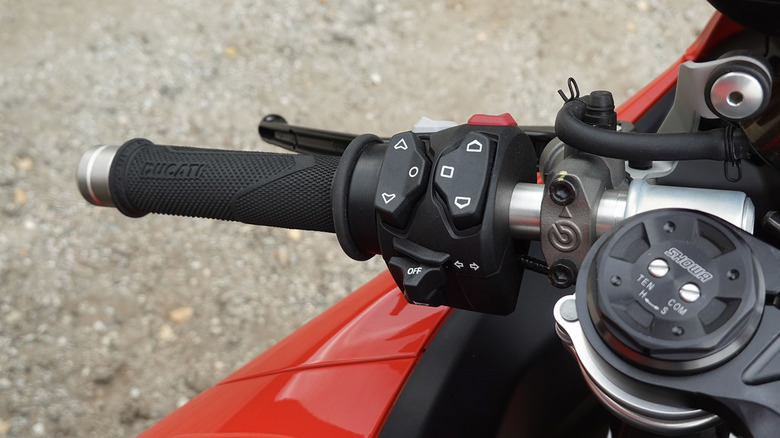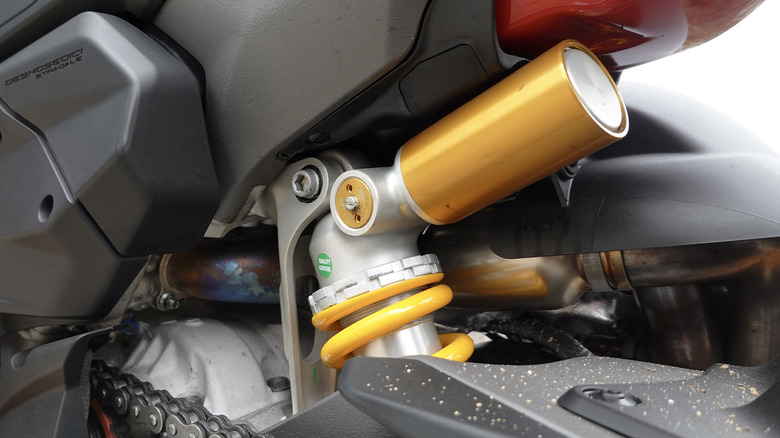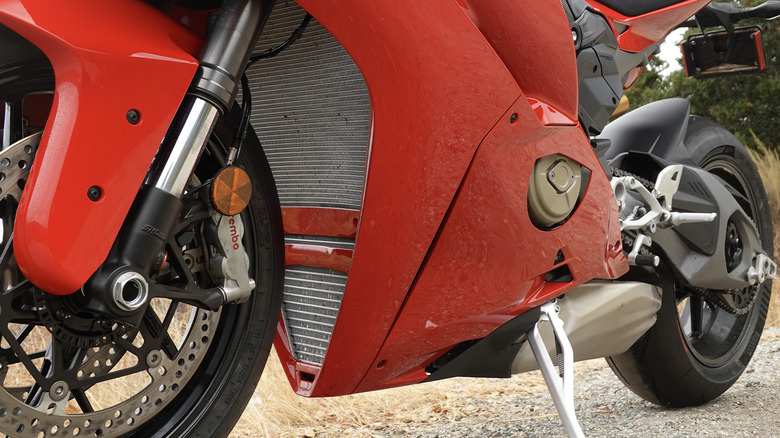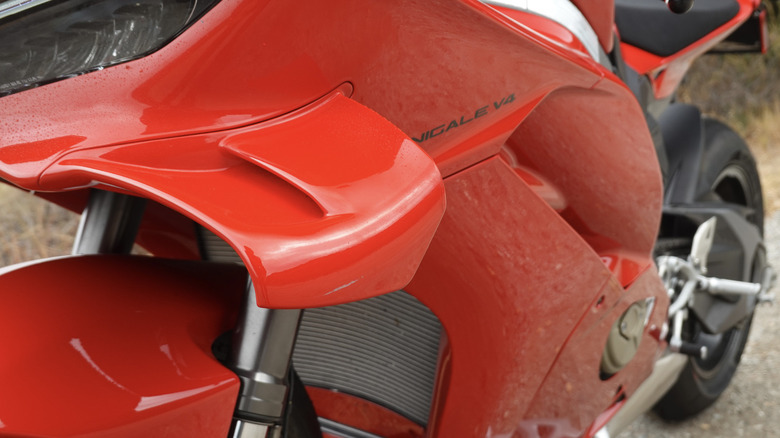Yes, Ducati's 2025 Panigale V4 Is A Track Beast, But Is It Too Much For The Road?
Early media ride reviews of Ducati's new Panigale V4 generation largely focused on track times, showing off the wild capability made possible by advancements in electronics and a few controversial engineering decisions. The double-sided swingarm, in particular, and unavoidable aero winglets attracted plenty of attention, though most reviewers seemed absolutely stunned at the new Panigale's prodigious performance potential, as well.
For Monterey Car Week this year, I once again begged Ducati to loan me a bike in the hopes of ripping through the bumper-to-bumper traffic that log-jams the entire peninsula year in and year out. Last year's loan of the outgoing Panigale V4 S, a bike I'd fittingly ridden on track at Laguna Seca earlier that same summer, served as a less-than-ideal companion to the Car Week mayhem. And yet, once the roads cleared out and I got some time to rip, I discovered quite possibly the greatest sportbike ever made.
So when Ducati responded to my desperate pleas with the potential for a loan of the new V4, I approached the situation with plenty of excitement—tempered with a little trepidation, too. I knew I wanted a V2, and maybe even a Streetfighter, for the lanesplitting and city riding. Even if the Hypermotard 698 Mono still undeniably serves best for commuting. But oh well, I figured, why not go big? Let's get loud, and maybe the Bugattis and Lambos will finally pay attention.
Scientifically discovering fuel cutoff
Ironically, though, the new V4 lacks some of the low-end guttural grunt typical of exotic Italian superbikes. Instead, the new 1,103-cc Desmosedici Stradale engine panders to Euro 5 emissions regulations with a somewhat choked-up sound that transitions from a mild clatter to more of a screeching wail at higher revs, rather than thumping bass giving way rip-roaring fiend. And the gearing, as I discovered quickly, borders on absurd. This bike will hit 102 miles per hour in first—which I certainly calculated by doing the math based on theoretical speed at lower RPMs versus the 15,000-RPM redline, and not by hitting fuel cutoff at full throttle...
So sadly, other than the brilliant red paint job, few supercar owners heard me coming past and scooted out of the way unless I pulled in the clutch and twisted my right wrist a few times aggressively. Despite that lack of a more heartrending soundtrack—an easily solved dilemma, of course—the V4 engine nonetheless matches the hilarious gearing. Total ratings of 209 horsepower and 89.5 lb-ft of torque matter much less than how quickly the power comes on, from borderline stalling out immediately into the power band, then pulling harder and harder forever and ever amen.
Track toy or road racer?
Extremely tight gear ratios climbing from first to second, then third, clearly cater to track-day fun, though I also occasionally struggled to discern whether my foot movements actually resulted in gearshifts at all. Until, that is, I realized I needed to just stop using the surprisingly light clutch lever other than to stop and start again. The quickshifter's evolution for this new generation actually makes daily life without using the clutch completely livable. Unlike all other quickshifters, from both Ducati and competitors, this new system works at any point, any time, with smooth and predictable transitions rather than only functioning properly at full throttle and high revs, or while fully off throttle and downshifting.
So at least in terms of shifting, at least one element of the new generation caters to road riding as well as track usage—though whether on purpose or simply as a byproduct of shaving lap times, I cannot comment with any certainty. Otherwise, so much of the Panigale's improvements year over year come down to performance at pace that far exceeds legality, safety, and sanity on public roads. Hence why I never experienced, as far as I know, the automatic rear braking in action—though I certainly witnessed traction control intervening more than a few times on the misty, rainy roads of Monterey.
Electronics take the Panigale to a new level
At first, I started riding in the hot sun, and even then the Sport mode's instantaneous throttle response behaved a bit too on-off for me to smoothly sail through traffic at anything less than full beans. After a few minutes, I switched down into Road mode in the hopes of finding a little more modulation. But once the marine layer started rolling in, a typical occurrence in the mornings and evenings, I then struggled with the electronics suite. Somehow, I could now select Wet mode, but then after a few seconds, the bike reverted back to Road every time. Keeping an eye on oil patches from air-cooled Porsches and pre-war Concours winners, not to mention the revelry among carspotting photographers, took too much attention away from actually managing a proper ride mode selection—so I wound up riding through the full slip-and-slide in Road anyway, and performed a few clean rear tire drifts as the 6.9-inch TFT display lit up yellow-orange.
The low-slung ergonomics, again catering to a high-speed rider position for ideal balance and aerodynamics, actually worked in my favor when the rear wheel stepped out. As a road cyclist accustomed to my handlebars being eight inches or so lower than my seat, a little shift of the hips, a quick transfer of weight on the pegs, and some counter-steering brought the V4 right back into line without fault. And all without, for me at least, too much forearm or wrist aching throughout the course of the week.
Lightweight, tossable, touchy
Plus, that aggressive fuel tank design does more than just look good. This bike might take the cake for most perfect upper knee placement while leaned over and hanging off, on the few occasions when I actually found some open road to hit higher speeds. The narrow seat, squared off on a bumblebee waist, contributes further to the impression of responsive mass transfer. And yet the bike weighs 423 pounds wet (and not just wet from the rain).
I'd have guessed more like 370 pounds, which indicates how much of the outgoing Panigale V4 R's character Ducati baked into the new "entry-level" model. That flickable nature served well in traffic, as I imagine on the track, but also lacks some of the inherent stability of the previous generation non-R. Because yes, I am sad to report that even the new base V4 reveals every little flaw in my riding technique, as the twitchiest track toys so often do.
The Panigale V4 exposes my own riding technique
Hopefully the downrated suspension can help to console some of my fragile ego—unlike on the V4 S, the base lacks electronically adjustable Öhlins dampers. Of course, the manually adjustable suspension arrives well tuned from the factory, ready to soak up any granularity and rough patches of pavement without upsetting the chassis, while keeping the tires planted perfectly through larger undulations and bumps.
If I owned a V4 for longer than a week and planned to ride the bike around town rather than on a racetrack, I might dial in a bit more compliance. Then again, I struggle to comprehend making the decision not to step up to the V4 S. Of course, budgets come into play, but so much of what the S uses to cater to track riding—the electronics, electronic Öhlins, reduced mass, forged wheels—also sounds better for the road, too. And for a strictly road machine, why not just stick with the more substantial feeling, less antsy previous S?
Hotter than it looks
Speaking of comparisons to the previous bike, we need to accept that all fairing-clad superbikes run hot at low speeds in traffic. But this V4 truly requires full leathers and probably a base layer, even as high as 70 miles an hour on cold mornings when my Alpinestars jeans and merino wool undies absolutely started roasting my—ahem—inner thighs. (Good luck finding many opportunities to go much faster around Monterey, too.) I struggle to comprehend why all that heat, exactly, since the exhaust mostly routes downward rather than directly under the seat. Coolant hoses and airflow past the gaping maw of radiator fins seem key to understanding why this bike ran hotter than anything I've ever ridden previously.
Again, airflow at track speeds and never sitting directly squared center on the seat while hanging off in a full set of leathers probably render the temperatures less of a concern. Do the winglets contribute to the situation? Unclear. Do I want them in carbon or painted? Decisions, decisions. In pics, the styling sure looks somewhat crustacean in all Rosso Corsa. Less so, up close in person. The whole design coalesces well, or at least in my imagination after a tail tidy and installing some smaller mirrors (though in a groundbreaking first, these original Ducati rearview mirrors actually work quite well).
A base V4's conundrum
Obviously the V4 needs—no, deserves—some thumping pipes to unleash more of that snarling Italian spirit that modern emissions regulations desperately hope to ruin. Otherwise, the bike just works. Effortless power at any rev, yet you know the Brembos will clamp down speed with a single finger. Easy to blast off in a straight line pull, light as a feather to tip in with full confidence. This bike made me a better rider in a week of traffic, somehow.
Then again, what about in more direct comparison to the previous V4 S, quite possibly my favorite superbike ever? And the V4 R, a stunning track tool but maybe, just maybe, too focused on raw performance at fully insane speed to shine for regular life. In hindsight, the new Panigale clearly borrows much of the V4 R and bakes that character into even the base model. While the all-out capability improves, does doing so necessarily result in a better road-going bike? Well, the base V4 presents something of a conundrum. It's not the one I'd buy for immediate track use, since the S adds more advanced ride mode adjustability, and the Öhlins, and the forged wheels, etc.
2025 Ducati Panigale V4 verdict
Meanwhile, for an all-rounder, I still prefer the outgoing V4 S—and not just because of the single-sided swingarm, but likely because the additional weight creates a more planted, steady personality. Somehow, the V4 winds up in a middle zone of budget-mindedness in the realm of seriously expensive superbikes at $25,995. The new S, however, runs up to $33,895. Why not just stick at a lower price point and go for the new V2 as a road bike, which drops power but also goes heavy on shaving poundage?
To truly make up my mind, I might need to ride all these options back-to-back: in the imaginary world where I might actually purchase a supreme superbike, I want the one I love riding most without a single shred of doubt. Comparisons of riding a year apart rely on fleeting memory and fading impressions, though luckily I do take a ton of notes. Even more luckily, despite my nitpicking of infinitesimal differences, right here in reality, I can happily confirm there's still pretty much no way to go wrong buying a Panigale.
